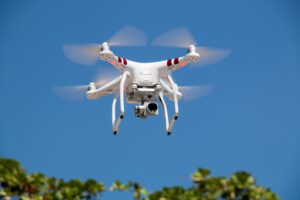
IKEA Lack enclosure plexiglass
The Print Quality Struggle for Desktop 3D Printers
Everyone who’s worked with a desktop 3D printer knows that print quality is inconsistent. Even the finest printing machines can churn out poor results without the optimal environment. Temperature shifts, air turbulence, and dust can turn the perfect job into a mess. Hence, a growing number of makers are adopting enclosures.
Why an Enclosure Makes a Difference
An enclosure houses the printer in a stable and controlled environment. It insulates the heat, seals out drafts, and lessens environmental disturbances. This value is most apparent when printing ABS, PETG, or nylon. When open-air conditions or abrupt fluctuations in temperature hit these materials, they warp readily. Such enclosures prevent this.
IKEA Lack Table Hack
Many DIY 3D printer users regard the IKEA Lack enclosure setup as their build of choice. It’s easy to assemble: stack two IKEA Lack tables, enclose the sides, and slide the printer into the assembled space. Not only is it budget-friendly, but it’s equally simple to assemble and highly customizable. Printing enthusiasts from across the globe praise it for its low cost paired with high functionality.
The Benefits of Plexiglass Panels That Have Changed the Game
Many makers rely on cardboard, wood, or plastic for their enclosure walls. However, plexiglass moves the game to the next tier. It is transparent, strong, and heat-resistant. It makes it easy to supervise prints while the enclosure remains closed. It also seals more effectively than softer materials, thereby keeping the interior at a consistent temperature.
Enhanced Temperature Control for Enhanced Layer Bonding
When the printer prints inside a sealed enclosure, it maintains a steady, warmer temperature. This is essential for solid layer bonding. When the area is free of drafts or cool air currents, the layers bind more strongly. The resultant reduction in layer separation likewise enhances mechanical strength. In other words, it’s an outright improvement in print quality.
Warping Is Nearly Eliminated
ABS is well-known for warping when it cools, and even PLA may detach from the bed in chilly rooms. The plexiglass enclosure of the IKEA Lack retains warm air and averts abrupt temperature changes. Stable ambient temperatures cause corners to maintain their flat surface and ensure accurate prints.
Quieter Printing in Shared Spaces
A printer enclosure boosts quality and reduces noise. Plexiglass panels scatter sound, thereby muting the printer. It works perfectly in a home office, a bedroom, or a shared studio. You can print at any time without disturbing the people around you.
Dust and Debris Protection
A configuration that leaves the printer exposed accumulates dust. During a print, filament particles, hair, and dust may settle on the mid-layered portion of the piece, impacting both the appearance and finish. An enclosed printer remains cleaner. Your prints finish with a smoother surface, and you have to clean the machine less frequently. It proves to be a practical long-term advantage.
Heightened Safety for the Home and Pets
If you’ve got children or furry friends, safety cannot be ignored. An open 3D printer features numerous moving mechanisms and hot elements. A plexiglass enclosure shields your family members and keeps inquiring hands at bay. It likewise enhances the professional look of your setup.
Custom Features Offer Yet More Benefits
The IKEA Lack build can accommodate add-ons such as LED lights, fans, and temperature sensors. Many users attach magnetic doors or hinged panels. You may also attach camera mounts to monitor your prints from afar. A modular setup stimulates creativity and personal customization.
Filament-Specific Advantages
Enclosures offer the greatest advantage to ABS, ASA, and nylon. Cool air causes these materials to contract quickly, leading to warping and layer delamination. The heat-retentive properties of the plexiglass walls keep prints unscathed, and the enclosed areas also show the consistency of PETG and PLA.
Good for High-Detail Prints and Long Jobs
Long-running prints are common with high-detail projects. During that interval, a printer left open may experience a discrepancy in temperature. The plexiglass bed of the IKEA Lack enclosure keeps internal conditions constant. Consequently, it lessens artifacts and errors within long-duration prints. Greater detail, less stress.
Build It Once, Benefit for Years
Amazingly, the arrangement turns out to be remarkably durable. Plexiglass is resistant to scratches and extreme heat. The Lack tables can accommodate the printer’s weight with no trouble. If you assemble it correctly, it can survive for many, many prints. Many makers keep the same enclosure in use for years, making only slight modifications.
Does this Really Enhance Quality? Absolutely.
Numerous users observe improved bed adhesion, less warping, and smoother finishes. Confined surroundings enable even budget printers to generate professional-grade outputs. By adopting a plexiglass solution on an IKEA Lack enclosure, you reap the performance of professional enclosures while spending only a fraction of the usual cost.
Final Thoughts: Worth Every Bit of Effort
Constructing an enclosure can be done in a weekend, yet those gains endure for a lot longer. A simpler upgrade yields higher quality, quieter operation, and fewer wasted prints. The IKEA Lack enclosure plexiglass configuration shows that astute design doesn’t need to be costly. To anyone who takes their maker craft seriously, this project is entirely worth the effort.






